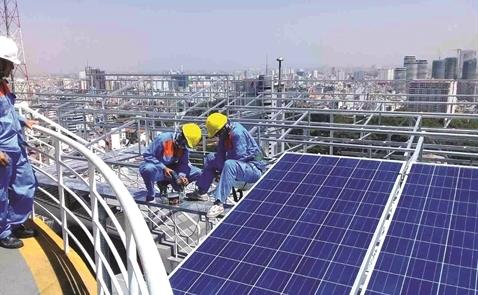VietNamNet Bridge – The profitability of solar energy projects is not as high as hydropower or thermopower plants, but the field has great potential as well as environmental benefits.

In late June, TTC organized a special conference with many big players in the world’s energy sector such as Trina Solar and JA Solar, and investment institutions such as IFC and AAM.
TTC plans to spend $1 billion on the projects in the field, while heavy investments will be made in 2017-2019, so that 1,000 MW worth of solar power will be generated from 2020.
TTC hopes solar power will bring the highest turnover to the group in the future.
“I am very excited about investing in solar and wind power,” said TTC’s president Dang Van Thanh. The 20 solar power plants will serve as the ’20 money printing machines’ for the group by 2020.
Vietnam, though located in the area with the highest solar radiation level in the world, only began developing its first solar power plant in 2014, providing electricity to the national grid.
Tran Van Binh from the European Renewable Energy Council noted that since then, Vietnam’s appropriate agencies have changed their mind about the renewable energy development strategy.
In 2016, the seventh electricity development plan was adjusted and under the new development plan, Vietnam strives to generate 850 MW worth of electricity by 2020 and 4,000 MW by 2025, while planning to spend $74 billion to develop ‘green energy’.
However, analysts believe that one of the most important reasons which prompted TTC and other investors to rush to build solar energy plants is that the solar cell price has fallen by 30 percent to 1/8 or 1/10 of that of 10 years ago.
In April 2017, the government stipulated that the import tax exemption for products that serve production at solar power projects. The investors of the projects can also enjoy the land and water surface rent exemption.
Meanwhile, EVN has the responsibility of buying all electricity from power projects at the price of 9.35 cent per kwh.
Investors estimate that the electricity buying price will ensure the IRR at no less than 15 percent, while the time needed to take back the investment capital is less than 12 years.
Thirty other investors have also poured money into solar energy. DooSung Vina has invested in a 30 MW plant in Binh Thuan province. Sinenergy Holdings has signed an MOU with Ninh Thuan provincial authorities on the development of a 300 MW solar plant.
RELATED NEWS
Taiwanese investors interested in Vietnam’s solar energy projects
Generating electricity with solar panels
Mai Chi